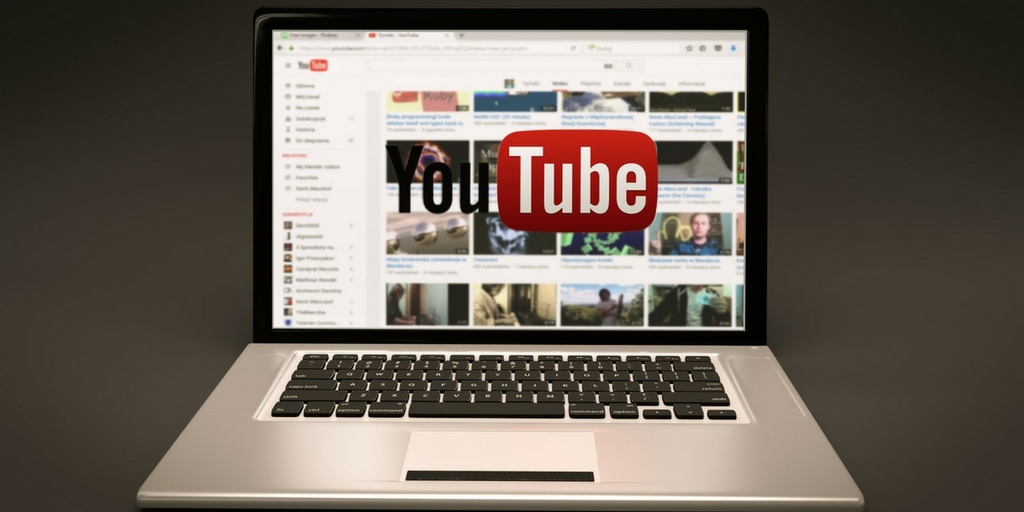
by Fronetics | Aug 31, 2017 | Blog, Marketing, Strategy, Supply Chain
As B2B buyers expect customized sales experiences, sellers can use these 3 tips to offer personalization at scale.
One of today’s biggest challenges facing B2B sellers is the increasing expectation of personalization as part of the buying experience. The seller’s task of offering personal experiences for all leads is a daunting one, particularly with limited time and marketing budgets.
As companies become increasingly focused on risk-mitigation in the buying process, they are far more inclined to trust vendors who can demonstrate that they understand and can address their specific needs and risk factors. According to Demand Gen Report’s 7th Annual B2B Buyer’s Survey, 89% of respondents stated that winning vendors “provided content that made it easier to show ROI and/or build a business case for the purchase.”
While the task of personalization may be daunting, it’s not impossible. And it’s certainly worth the effort. Here are three strategies your business can use to personalize sales pitches and make your marketing dollars work more efficiently.
3 ways to offer personalization at scale
1) Target smarter
We all know that social media platforms offer a wealth of demographic information. One of the most valuable insights it offers is intent signals: things like job changes, social posts, and hiring patterns, all of which can help your sales team identify the right time and strategy for reaching out to a potential buyer. You can use social media features built into the platforms themselves, like advanced filters and lead bots, to identify qualified leads.
Beyond identifying leads, smart targeting involves well-written and targeted online ads. According to Demand Gen’s report, “Online ads are shaping early behaviors and opinions of B2B buyers. 63% of respondents said they noticed ads from the solution provider they chose during the research phase.”
2) Demonstrate your understanding
Justin Shriber, vice president of marketing for LinkedIn sales and marketing solutions, reports that “80% of buyers don’t believe that the salespeople they deal with understand their business.” Most of this perception, Shriber says, is driven by the way salespeople converse with potential buyers. Using generic openers, and talking more than listening, reinforces this negative perception.
Set yourself apart by making sure that your opener lets the potential buyer know that you are paying attention to his/her particular needs and challenges. Make use of the information you’ve gleaned from social media to open the conversation by addressing a need or question the prospect has recently voiced.
3) Engage more closely
An important aspect of the personalization B2B buyers and consumers alike have come to expect is ongoing engagement. “When sales professionals are unable to provide ongoing value,” says Shriber, “the buyer feels no obligation to maintain a dialogue.” Continuing the conversation throughout the buying cycle is key to keeping the potential buyer invested. In addition, the most effective sellers use technology like email tracking and PointDrive to gauge whether the information they’re sharing is hitting the target. These technologies provide sales professionals with a feedback loop that they, in turn, can use to tailor future interactions.
Related posts:


by Fronetics | Jun 7, 2017 | Blog, Content Marketing, Data/Analytics, Marketing, Social Media
Building brand awareness is one of the key benefits of content marketing, but it’s notoriously difficult to measure. Until now.
Content marketing is a long-term solution through which a business establishes a relationship with and earns the trust of target customers. It’s called building brand awareness. Drawing the public’s attention to — and heightening their knowledge of — your business ultimately generates leads that turn into sales, after all, which is the end marketing objective.
Let’s be honest: This doesn’t happen overnight. And it’s often difficult to quantify (as opposed to a vanity metric, such as website visits). But that’s not a reason to throw in the towel. There are ways to measure the work that you’re putting into your content marketing program. And, more specifically, there are ways to measure brand awareness.
4 metrics that indicate you’re building brand awareness
1) Social media reach
The reach of your social content has a direct impact on your brand awareness. The larger the reach, the larger the potential audience.
Twitter originally had an internal tool that tracked how many times a tweet had been shared, but stopped supporting this data back in 2015. So where do you go to track your social media reach?
Sharedcount is a free online tool that allows you to track the number of times a piece of content has been shared on social media, including Facebook, LinkedIn and Google. Sharedcount is an easy way to get basic information about your social reach, so you can spend less time tracking tweets and more time producing your content.
2) Brand mentions
There’s a great deal of value to be gained from monitoring discussions about your brand online. Tracking brand mentions can lead to honest feedback and objective insight from potential leads.
There are several options you can use to track brand mentions. We prefer the ease of Google Alerts, which allows you to easily set up a custom alert, or Hootsuite, where you can track brand mentions, as well as specific keywords and phrases, across all of your social media feeds.
3) Blog shares
By adding a share bar to your blog posts, you make it easy for readers to share your blog content on social networks, spreading awareness about your content and your brand through the amplifying effect of social media.
These share bars are easy to set up and even easier to monitor. By measuring your average number of shares per blog, you can track what content your users are drawn to and what pieces fall flat.
4) Search volume
One of the main sources of traffic for most websites is through simple searches. If people are searching for your company or products, that’s a pretty solid indication that they are aware of your brand.
Using online tools, such as Google Adwords or Moz, you can track the searches for your products, blogs, social media platforms, and any other variation that you find useful. These tools are free, easy to use, and perfect for determining if your company is popping up when customers are searching.
Content marketing takes time, but there are hints along the way that your efforts are working. Using these tools to measure brand awareness offers clues that customers are finding your company in their search efforts. If the needle is not moving in a positive direction, always adjust your strategy to until you find what works for your business.
Related posts:


by Fronetics | May 2, 2017 | Blog, Content Marketing, Marketing, Social Media
YouTube creators focus on audience engagement, as opposed to branding, which helps them organically grow an authentic loyal following.
I recently watched a video from Truly Social President and Founder Tara Hunt about the genius of YouTube creators. She offers truly valuable insight into why people with little technology and resources have been more successful in growing a loyal audience with video than corporate campaigns with all the money and creativity in the world.
Perhaps it’s worth saying first: Yes, video can work for the supply chain. And YouTube, in particular, can be very worthwhile as part of your larger social marketing strategy. The decade-old video platform has over 1.3 billion users. 1.3 BILLION! And that’s not all: Users watch over 5 billion videos on YouTube every single day, and upload 300 hours of video every minute.
This presents a huge opportunity for your company to reach prospects in a new way. It also means that your videos really need to stand out to make an impact and avoid getting lost in the shuffle. After all, approximately 20% of people who start a video will leave after the first 10 seconds.
So how are creators attracting viewers while corporate brands aren’t?
5 ways creators are out-YouTubing brands
1. Consistency
Creators know the success behind their YouTube channels is a constant stream of content. This be can new content or simply responding to their followers, but they are active every day, around the clock. Brands tend to spend a lot of time and energy on content but are inconsistent in their posting, often abandoning their YouTube channels for days or weeks at a time. Their followers become bored with their lack of attention and move on.
2. Community
The foundation of YouTube — and most social media platforms, actually — is community and the resulting two-way dialogue between creators and their followers. The intent of a creator’s video is to engage their audience and build a relationship that is beneficial to both parties. On the other hand, brands tend to be overly focused on the attention their content stirs up, the “buzz” they are able to draw, neglecting the important process of creating and nurturing a relationship with their followers.
3. Interaction
Companies often focus on pushing their “messaging” on one (or just a few) social media platform(s). They spend an enormous amount of time and money perfecting content that reflects this messaging, hoping their followers will engage with it.
Contrarily, YouTube creators focus on interaction. They interact on multiple platforms, reaching out to their audience and taking full advantage of every opportunity to connect with their followers. What’s more, successful YouTubers don’t merely expect engagement — they ask for it. They promote hashtags, solicit video responses from viewers, and encourage feedback via social media interactions. Calls-to-action can stimulate subscriptions, shares and cross-pollination with other platforms.
4. Connection
Gone are the days of expensive and lengthy productions. Creators have captivated their audiences by creating organic, raw material that focuses on the emotional connect. The polished and professional content that brands create are void of vulnerability and lack the connection today’s followers are seeking.
5. Collaboration
Creators root for one another; they follow one another; they promote one another. YouTube creators seek the opportunity to expand their audience by collaborating with other creators who focus on the same topics and interests. Through the power of collaboration, creators expand the exposure of their content to different audiences, gaining subscribers and views.
Brands see other brands as competition. In a time when audiences prefer engagement and social awareness, this competitive attitude hurts brands’ likability and ultimately diminishes their viewership.
If companies were to focus more on audience engagement in these ways, they would have a better chance at mimicking the wild success of YouTube creators who have amassed a loyal following.
Related posts:

by Fronetics | May 1, 2017 | Blog, Leadership, Strategy
Companies usually try to understand failure, but what could they learn from analyzing their successes, too?
“Success is going from one failure to another without loss of enthusiasm.” Winston Churchill
Failure is said to be inevitable, and we all know it to be true. Any new venture is built on the hope of success. But accepting and managing failure is key to actually obtaining success.
Companies have a responsibility to ask the tough questions when things go awry. We have all been in these meetings: we diagnose failures, and we dissect the process, tools and staff involved to get to the root of the problem. Unfortunately, most companies only step back and really dive into what happened when something bad happens.
But what if companies took the same approach when something went right?
Focusing on the lessons in success
Companies are all a work in process. We learn as we go, and that learning should include understanding our successes. Shifting the focus from ‘what went wrong’ to ‘what went right’ creates a foundation for being able to recreate success in your organization.
Identifying and analyzing the components of a successful process can be the first step in moving into this new mindset. Paul Michelman, editor in chief of the MIT Sloan Management Review, experimented with dissecting his the publication’s successes and quickly discovered that their best processes start with transparency. Michelman wrote:
We plan a pipeline of content that is stored in a document accessible by the key participants. We track each content item’s progress on a shared project management platform. The few times we encounter bumps, a lack of information sharing is almost always at fault.
Though Michelman admits his research is unscientific, the key factors he has identified in their success stories has helped his business focus on what’s working, instead of waiting to dissect failure.
Technology can help
In today’s world, there is no end to the amount of data you can collect on your business. Your company’s digital presence is an easy place to start.
Tools like Google Analytics can give you advanced insight into how prospects are interacting with your company online. You can analyze how people are finding your business, and how they’re moving through your website all the way to making purchases. In other words, you can begin to analyze all of the little successes that make your business turn. How can you replicate that success on new projects and processes?
When things are going well, most companies don’t see the need to reflect on what happened, what went right. But don’t let this opportunity slip by. You should examine failures, but you should also look closely at successes. Take the time to brainstorm with your team on what you’re doing well and how you can keep up that success while you plan for future growth. —
Related posts:

by Fronetics | Apr 14, 2017 | Blog, Content Marketing, Marketing, Social Media
Social media gives you access to aspirational customers and their networks, a benefit that can’t be quantified in dollars.
One of the trickiest things about implementing a social media strategy is that success can be difficult to measure. While most professionals acknowledge that a social media marketing presence is important, it’s hard to make a case for resources when you can’t precisely quantify the value in terms of dollar amount.
This, however, shouldn’t stop your business from recognizing the importance of social media as part of a robust marketing strategy. You need to start thinking about value in terms of potential, rather than the immediate sale.
“It’s important that we continue to shift our focus from the short-term sale to the long-term value of social media,” says Emily Teele, loyalty and retention marketing manager at West Elm. “Part of our willingness to make this shift comes from trust that our efforts will pay off, even if not immediately, and part comes from finding new ways to measure results over time.”
Tomorrow’s customers
One of the most valuable and exciting aspects of social media is that it allows business to discover and engage with a new segment of the B2B community: aspirational customers. In the past, businesses haven’t had access to these customers. Now that we can find out who they are, their long-term value cannot be overstated — both as buyers, and in building brand loyalty and an engaged customer base.
According to a recent study published in MIT Sloan Management Review, aspirational customers are likely to follow multiple brands on social media sites. Over half follow at least one brand that they haven’t made a purchase from. But, “our data suggests that they do plan to purchase in the future,” say the study’s authors. “Today’s followers are very likely to be tomorrow’s customers.”
The social network = social media success
There’s another factor to consider regarding the value of social media marketing. At its core, these are networking platforms. That means you not only have access to a new customer base, but to their connections as well.
Your followers’ engagement on social media can expand your reach, as they engage with their own networks. Putting a dollar value on such social reach is fairly meaningless — but it has the potential to add to your bottom line both now and in the future.
What’s more, a recent McKinsey study attributes word of mouth to be the primary influence for up to 50% of all purchase decisions. The study authors go on to say, “Followers who are not yet purchasers can share their experience with the brand, and deepen their commitment to the brand, even prior to that first purchase.”
It’s time we start thinking about social media success in this new way: in terms of potential and expanding value, rather than just immediate dollar amounts.
Related posts:









